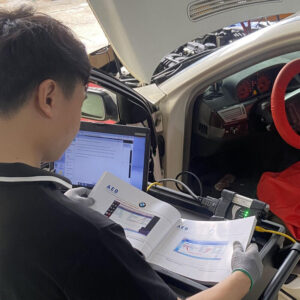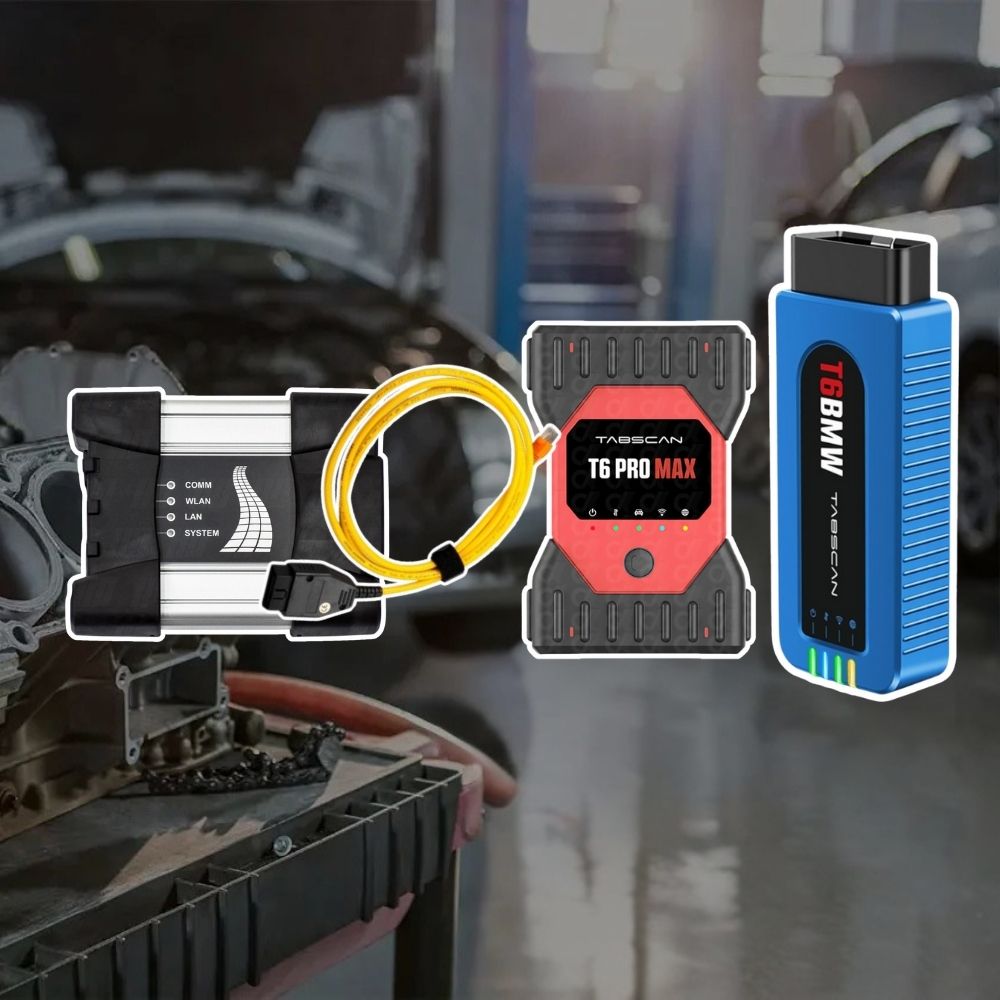
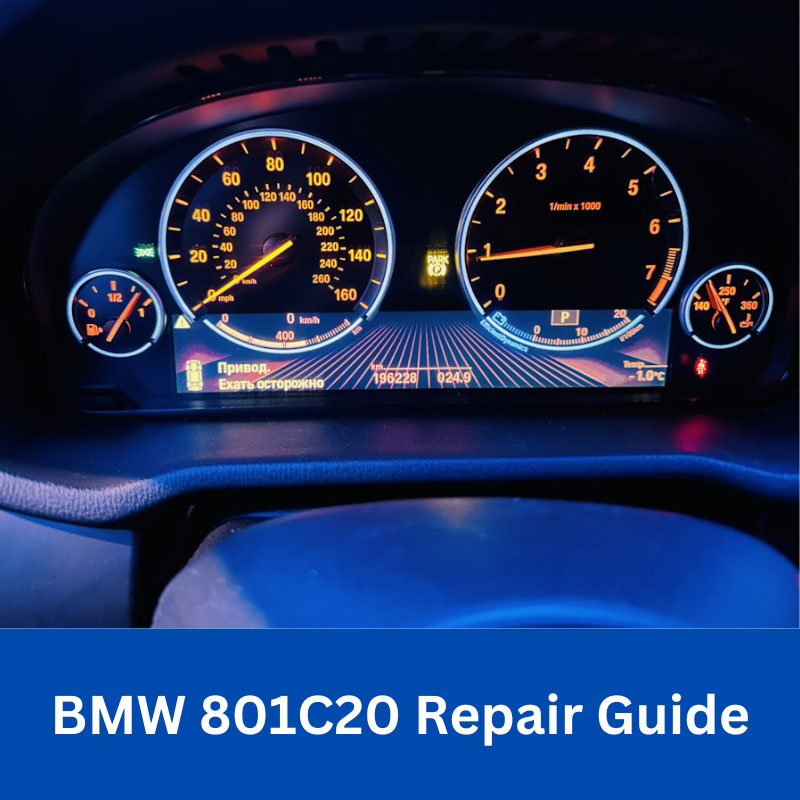
BMW 801C20 Fault Code: Causes and How to Fix It
Contents
- 1. What is the BMW 801C20 Fault Code?
- Symptoms of BMW 801C20 Fault Code
- 2. Causes of BMW 801C20 Fault Code
- 3. Recommended Tools for BMW 801C20 Repair
- Hardware:
- Software:
- 4. How to Fix BMW 801C20 Fault Code
- 4.1. Check Battery Voltage and Charge If Necessary:
- 4.2. Inspect and Replace Blown Fuses:
- 4.3. Thoroughly Inspect Wiring Harnesses and Connections:
- 4.4. Check Specific Comfort System Modules for Fault Codes:
- 4.5. Scan and Clear All Fault Codes Using BMW Diagnostic Software:
- 4.6. Consider Resetting or Inspecting the Central Gateway Module (ZGM):
- Conclusion
The BMW 801C20 Fault Code is an error indicating that the central fault memory is full in the ZGM (Central Gateway Module). Although it does not directly indicate a control unit malfunction, it can affect various electrical systems in your vehicle. In this article, we will explore the causes of this fault code, its symptoms, and how to resolve it effectively.
1. What is the BMW 801C20 Fault Code?
Code: 801C20 – ZGM_Central fault memory full – No control unit fault
This error is typically stored in the ZGM (Central Gateway Module) when the central fault memory becomes full. It does not necessarily indicate a major electrical issue but can be triggered by various minor faults. The primary cause is usually low voltage in the vehicle’s battery. To diagnose this, use a multimeter to check battery voltage:
- Ignition on: The battery should show at least 12V.
- Engine running at idle: Voltage should be 14.30V or higher.
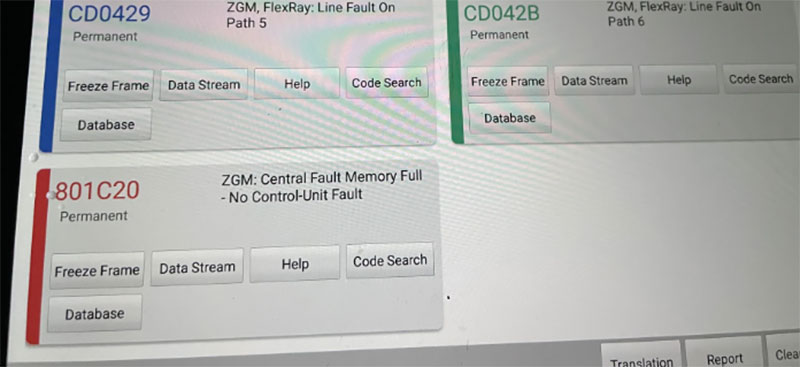
Symptoms of BMW 801C20 Fault Code
If your BMW has the 801C20 fault code, you may experience the following issues:
-
Malfunctioning Music System: One of the comfort features that might exhibit issues when the 801C20 fault is present is the music or audio system. This could manifest as the system not turning on, intermittent audio cutouts, a lack of sound from the speakers, or other erratic behavior. While the fault code itself doesn’t directly point to an audio system failure, the underlying low voltage conditions or other electrical anomalies that contributed to the full fault memory could also affect the operation of the audio control unit.
-
Central Locking System Issues: The central locking system, which allows the driver to lock and unlock all doors simultaneously, might also experience malfunctions. This could include the system not responding to the key fob, certain doors not locking or unlocking, or the alarm system behaving erratically. Again, the 801C20 code is a general indicator, but the electrical disturbances that led to it could also impact the functioning of the body control module responsible for managing the central locking.
-
Air Conditioning System Problems: Failures or intermittent problems with the vehicle’s air conditioning (A/C) system can also be observed. This might include the A/C not blowing cold air, the fan not operating correctly, or unusual noises coming from the climate control system. Electrical issues, such as voltage fluctuations or problems with related sensors or actuators, that contribute to the 801C20 fault could also affect the proper operation of the climate control system.
-
Other Vehicle Comfort Feature Malfunctions: Beyond the music system, central locking, and air conditioning, other comfort features controlled by electronic modules and integrated through the ZGM might also exhibit unusual behavior. These could include power windows not operating smoothly, issues with the sunroof or convertible top mechanisms, problems with power seats or mirrors, or even irregularities in the operation of interior or exterior lighting. The key is to recognize that the 801C20 code suggests an underlying electrical environment where various modules might have logged minor faults, and these conditions could, in some cases, manifest as noticeable malfunctions in these comfort systems.
-
Possible Malfunctions in Other Control Modules: In some scenarios, the conditions that led to the ZGM’s fault memory becoming full might also be impacting the proper functioning of other control modules within the vehicle’s network. While the 801C20 code itself states “No control unit fault,” the accumulation of errors could, over time or under specific circumstances, potentially lead to more significant issues in other electronic systems if the underlying causes are not addressed. Therefore, a thorough scan for fault codes in all relevant control modules is an important step in the diagnostic process.
Please note: The presence of the 801C20 fault code does not guarantee that all or any of these symptoms will be present. In many cases, the fault memory might simply be full due to a history of minor, resolved issues that did not cause any noticeable operational problems for the driver. However, if you are experiencing any of these electrical malfunctions in conjunction with the 801C20 fault code, it strengthens the need for a comprehensive diagnosis to identify and resolve the underlying causes affecting the vehicle’s electrical system. Addressing the 801C20 code and investigating any associated symptoms will contribute to the overall health and reliable operation of your BMW.
2. Causes of BMW 801C20 Fault Code
The BMW 801C20 fault code, while indicating a full central fault memory, can be triggered by a variety of underlying issues related to the vehicle’s electrical system. Pinpointing the root cause is essential for a lasting solution.
2.1. Battery Replacement or Low Voltage:
A very common trigger for the BMW 801C20 error is a recent battery replacement that was not properly registered and coded to the BMW’s power management system. According to BMW service guidelines (SI B61 03 07 and SI B61 09 08, for example), battery registration informs the vehicle’s ECU about the new battery’s capacity and type, allowing the charging system to optimize its operation and ensure the new battery’s longevity. If this crucial step is omitted, the system might not recognize the new battery correctly, leading to voltage fluctuations and the storage of numerous minor faults. Similarly, if the car battery has been significantly drained or is consistently operating at a low voltage (below 12V with the ignition on), various electrical components may experience temporary malfunctions, leading to fault entries in the ZGM’s central memory. Over time, these accumulated entries can fill the memory and trigger the BMW 801C20 code.
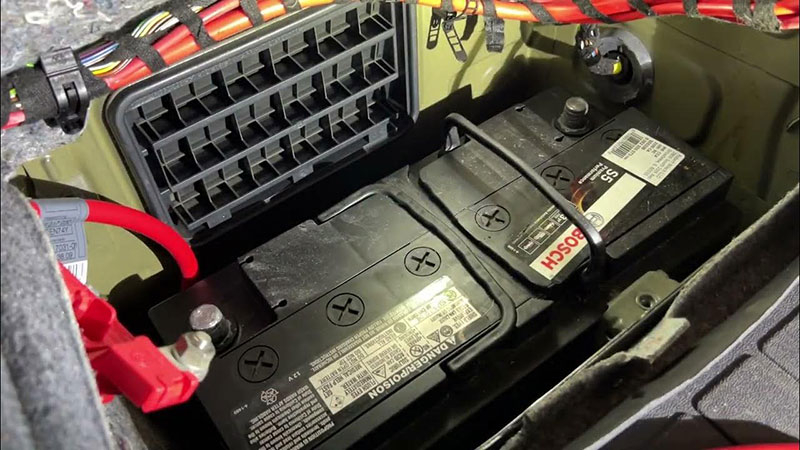
2.2. Voltage Drops During Battery Replacement:
Even during the process of replacing the battery, if the vehicle experiences a significant and abrupt drop in voltage, the central gateway module and other electronic control units can temporarily lose their calibration or register errors. This can occur if a supplemental power supply is not used to maintain a stable voltage during the battery swap. BMW technical bulletins often recommend the use of a power supply stabilizer during battery replacement, especially in newer models with sensitive electronics, to prevent such voltage fluctuations and potential fault code generation.
2.3. Errors Stored in Other Control Modules:
The ZGM acts as a central repository for various communication and diagnostic information within the vehicle’s network. Fault codes that are initially triggered and stored in other individual control modules (e.g., those controlling the audio system, central locking, climate control, etc.) can sometimes also be mirrored or logged within the ZGM’s central fault memory. Therefore, a seemingly unrelated fault in a comfort system or another electronic component could indirectly contribute to filling the ZGM’s memory and triggering the 801C20 code. A comprehensive system scan using a BMW-specific diagnostic tool is necessary to identify if other control modules have stored fault codes that might be related.
2.4. Damaged Wiring or Blown Fuses:
Faulty or damaged wiring harnesses within the control module system can lead to intermittent electrical issues, short circuits, or a lack of proper power supply to various components. These electrical anomalies can generate numerous fault codes that eventually populate the ZGM’s central memory. Similarly, blown fuses that protect specific circuits related to control modules can cause temporary loss of power, leading to the registration of faults. A thorough inspection of wiring harnesses, connectors, and fuses is crucial to identify and rectify any such underlying electrical problems. BMW wiring diagrams (available through official service information systems) can be invaluable in tracing circuits and identifying potential points of failure.
2.5. Electrical Component Malfunctions:
Issues with various electrical components within the vehicle’s comfort systems or other auxiliary systems can also contribute to the 801C20 fault. For instance, a malfunctioning music system, a faulty central locking actuator, or a problem with the air conditioning system’s electronics could generate fault codes that are logged and contribute to filling the ZGM’s memory. Diagnosing these types of issues often involves using a BMW diagnostic scanner to specifically check the fault memory of the affected comfort system modules and then further investigating any identified faulty components. Repairing or replacing these malfunctioning electrical components is necessary to prevent the recurrence of related fault codes.
3. Recommended Tools for BMW 801C20 Repair
To properly diagnose and repair the BMW DTC 801C20, you will need:
Hardware:
- BMW ICOM Next
- Autel MaxiSYS Elite
- Launch X431 V+
- A laptop or PC with the necessary software
Software:
- ISTA-D (Integrated Service Technical Application – Diagnostics)
- ISTA-P (Integrated Service Technical Application – Programming)
- Rheingold
4. How to Fix BMW 801C20 Fault Code
4.1. Check Battery Voltage and Charge If Necessary:
Begin by assessing the health of your BMW’s battery. Using a digital multimeter, check the battery voltage with the ignition turned off (should be around 12.6V or higher for a healthy battery), with the ignition turned on (should be at least 12V), and with the engine running at idle (should be 14.3V or higher, indicating proper charging).
If the voltage readings are below these thresholds, the battery may be weak or the charging system might have a problem. Recharge the battery using a suitable automotive battery charger. If the battery is old or fails a load test (typically performed at an auto parts store or with a professional battery tester), it should be replaced.
Crucially, if you replace the battery, it is absolutely essential to register and code the new battery to your BMW using a BMW-specific diagnostic tool such as ISTA-D or a comparable aftermarket scanner that supports this function. This step ensures that the vehicle’s power management system correctly recognizes and charges the new battery, preventing further electrical issues and potential fault codes. According to BMW technical training materials, failure to register a new battery can lead to improper charging, reduced battery lifespan, and various electrical system malfunctions.
4.2. Inspect and Replace Blown Fuses:
- Locate the vehicle’s fuse box(es). In BMWs, the primary fuse box is often located behind the glove compartment, but there might be additional fuse panels in other areas, such as the engine compartment or the trunk.
- Consult your BMW owner’s manual for the exact locations. Carefully inspect all fuses, paying particular attention to the fuses associated with the vehicle’s control modules and comfort systems (e.g., the ACC fuse, fuses for the audio system, central locking, etc.).
- Look for signs of a blown fuse, such as a broken filament inside the fuse housing. Replace any blown fuses with new fuses of the exact same rating (amperage). A blown fuse indicates an overcurrent situation, so if the replacement fuse blows immediately, there is likely a more significant underlying electrical problem (e.g., a short circuit) that needs further investigation.
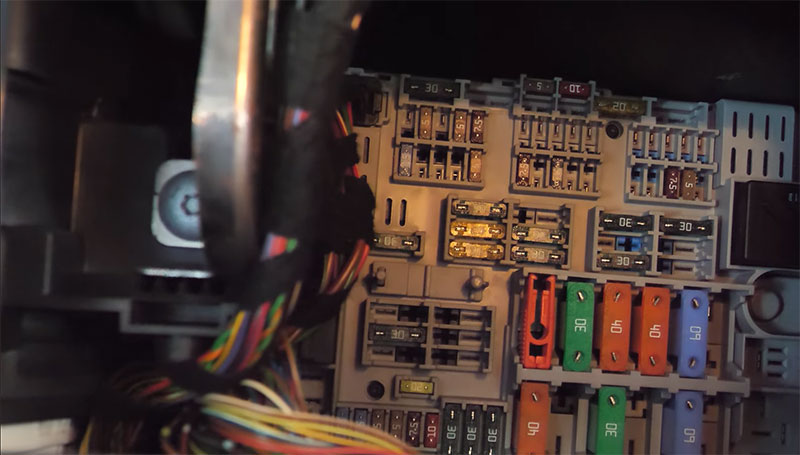
4.3. Thoroughly Inspect Wiring Harnesses and Connections:
- Carefully examine the wiring harnesses and electrical connectors related to the various control modules and comfort systems that might be affected.
- Look for any signs of physical damage to the wiring, such as cuts, abrasions, or exposed wires.
- Check connectors for corrosion, loose pins, or signs of damage. Corroded connectors should be cleaned or replaced as necessary.
- Pay close attention to ground connections, ensuring they are clean and secure.
- Damaged wiring or poor connections can lead to intermittent electrical issues and the generation of fault codes. If you identify any damaged wiring, repair it properly using appropriate automotive wiring repair techniques, such as soldering and heat-shrinking.
- BMW electrical wiring diagrams (available through official BMW service information or reputable third-party databases) can be extremely helpful in tracing specific circuits and identifying potential areas of concern.
4.4. Check Specific Comfort System Modules for Fault Codes:
- If you are experiencing malfunctions in specific comfort systems like the central locking, audio, or air conditioning, use a BMW-specific diagnostic scanner (such as ISTA-D, ISTA-P, Rheingold, Autel MaxiSYS, or Launch X431) to directly scan the fault memory of the control module responsible for that particular system (e.g., the Body Domain Controller (BDC) or Car Access System (CAS) for central locking, the Head Unit for audio, and the Integrated Automatic Climate Control (IHKA) for the A/C).
- Identify any fault codes stored in these modules and troubleshoot them according to the diagnostic procedures provided by the software. Resolving these specific system faults might also address some of the underlying issues contributing to the full central fault memory in the ZGM.
4.5. Scan and Clear All Fault Codes Using BMW Diagnostic Software:
- Connect your BMW-specific diagnostic tool (ISTA-D/Rheingold is highly recommended for comprehensive BMW diagnostics) to the vehicle’s OBD2 port.
- Perform a full scan of all electronic control units to identify all stored fault codes, including the 801C20 code in the ZGM and any other related or unrelated codes in other modules.
- Once you have a record of all the stored faults, use the diagnostic software to clear all the fault codes from all the control units.
- After clearing the codes, it’s advisable to turn off the ignition for a few minutes and then restart the vehicle.
- Perform another diagnostic scan to see if the 801C20 fault code or any other codes have returned.
If the 801C20 code does not reappear, it’s possible that the issue was due to a accumulation of temporary faults, and clearing the memory has resolved the problem. However, if the code returns, it indicates that the underlying cause has not been addressed.
4.6. Consider Resetting or Inspecting the Central Gateway Module (ZGM):
If the 801C20 fault code persists even after checking the battery, fuses, wiring, and clearing all other fault codes, and if you continue to experience electrical malfunctions, there might be an issue with the ZGM itself, although this is less common as the 801C20 code specifically states “No control unit fault.” Some advanced diagnostic tools might offer the option to perform a reset or calibration of the ZGM. Consult the documentation for your diagnostic software for such procedures. In rare cases, if all other possibilities have been ruled out and the problems persist, a more in-depth inspection or even replacement of the ZGM might be necessary. This type of advanced troubleshooting is typically best performed by experienced BMW technicians with specialized diagnostic equipment and knowledge of the vehicle’s electrical architecture.
By following these detailed steps, you can systematically address the BMW 801C20 fault code. Remember that accurate diagnosis often requires the use of BMW-specific diagnostic tools to access detailed fault information and perform necessary system functions.
Conclusion
The BMW 801C20 fault code is a common issue related to full fault memory in the ZGM module, often caused by low battery voltage, blown fuses, or faulty wiring. While the issue might not always indicate a major failure, it can lead to inconvenient electrical malfunctions. Using professional diagnostic tools to scan, clear, and code the system is the best way to fix this problem.
If you’re experiencing BMW fault code 801C20, we can help! AutoExplain provides professional car diagnostics, coding, and programming support. Contact us via WhatsApp at +1(936)2896695 for expert assistance!
=> You may also like: List of BMW fault code


Best VW Audi Diagnostic Tool – TOP 6 Best VAG Diagnostic Tools 2025

Best Mercedes Benz Scanner Diagnostic Tool | Update Latest 2025
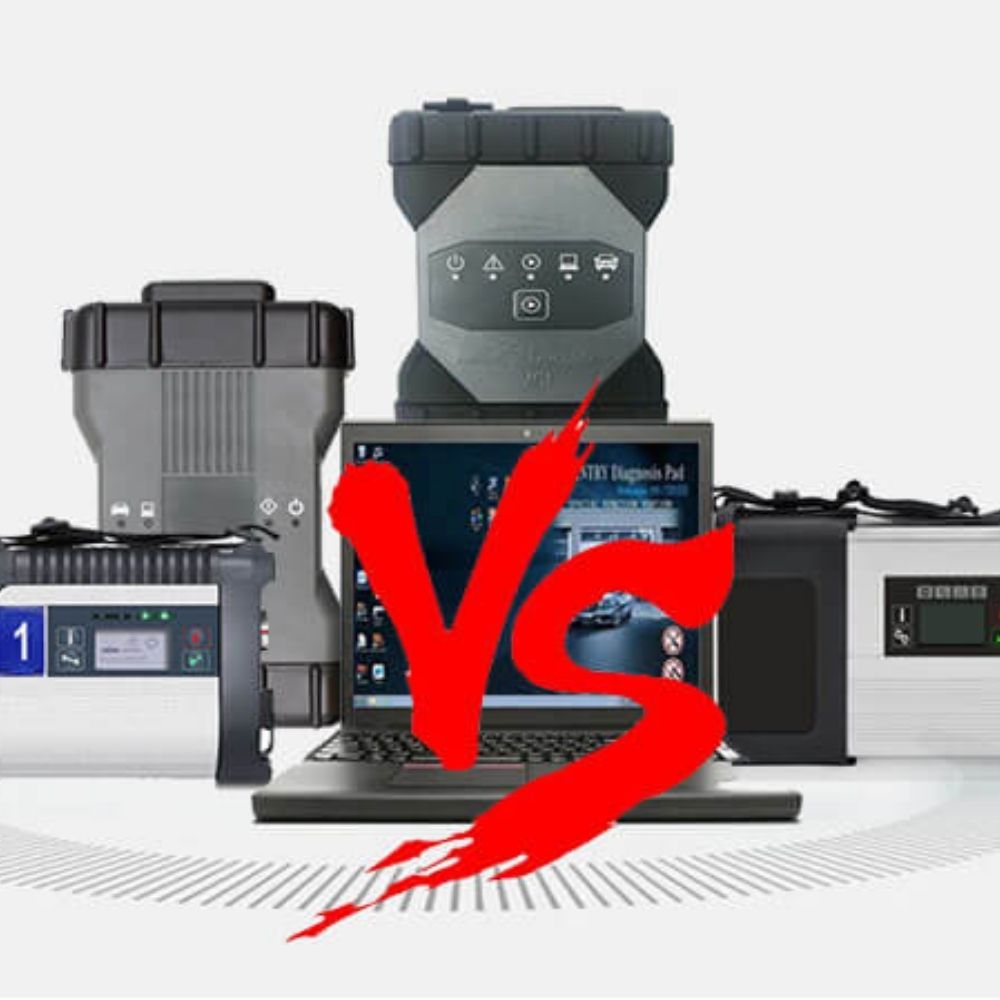
MB Star C4 vs C5 vs C6: What’s the difference between


Best BMW diagnostic tool: Top BMW Diagnostic and Coding tool 2025

Best VW Audi Diagnostic Tool – TOP 6 Best VAG Diagnostic Tools 2025



